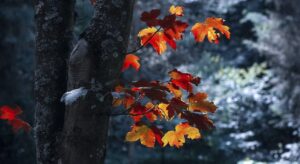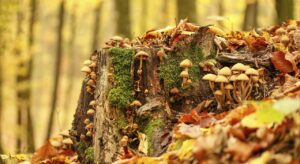Seaweeds, green, red or brown, grow by clinging to rocks or pebbles or by floating in the water. In recent years, some 250 species have spread heavily along European shores, causing alarm.
Brown algae, Sargassum, a large floating algae, arrived on European shores after the introduction of Japanese oysters in France in 1969. Up to 10 meters long, this plant is often introduced by the sea into oyster tubs or damages fishermen’s nets.
In addition, about 70 species of algae release toxins that can penetrate through the shells of clams, causing gastroenteritis (inflammation of the mucous membranes of the stomach and intestines) in humans.
Green algae: Their numbers have increased greatly since the early 1970s due to the pollution of waters with nitrates used in agriculture. However, these preparations contain nitrogen, which is exactly what these plants feed on. The growth of these algae causes real “green tides,” covering entire beaches: for example, one beach on the coast of northern France collects 20,000 cubic meters of algae per year.
Red algae: some red algae common in Asia, such as gracilaria asiatica, have taken over the waters off the coast of Sweden since 2003 and are spreading along the coasts of Norway and Denmark, threatening other algae species living there with extinction. Of particular concern is the fact that it is not known how they were introduced into these waters.
Ways to use algae
Rich in vitamins A, B12, C, iodine, and magnesium, seaweed has a special place in Asian cuisine. Seaweed (nori), one of the most popular edible algae. It is used to wrap lumps of rice or to enhance the taste of meat or fish dishes. Red seaweed is the base ingredient of the most popular Japanese dish, sushi. Brown algae, such as fucus bubbly, harvested on the shore, are used as a fertilizer. Algin, an algae extract, is used as a gel-forming agent; it is used in the pharmaceutical, food, and cosmetics industries, as well as in plastic and paint production. Agar agar, a jelly-like substance extracted from agar, a common algae in the waters of India as well as the White Sea, is used for microbial cultures.
Variety of plant life
Thousands of species of plants, flowering and non-flowering, lichens (plants composed of algae and fungus), and mosses inhabit the oceans. Some plants, such as posidonia, are threatened with extinction because of the encroachment of other species. While common in the Mediterranean Sea, it is disappearing under the onslaught of caulerpa, a green algae of tropical origin, nicknamed “killer algae,” accidentally introduced into the Mediterranean Sea.
If individual species disappear, in the long term, the entire balance of marine ecosystems is threatened.


